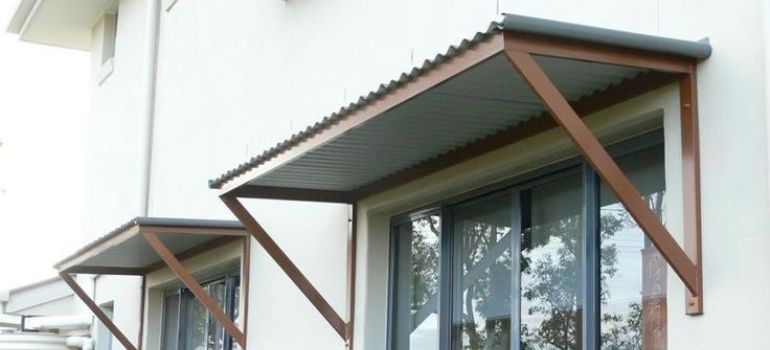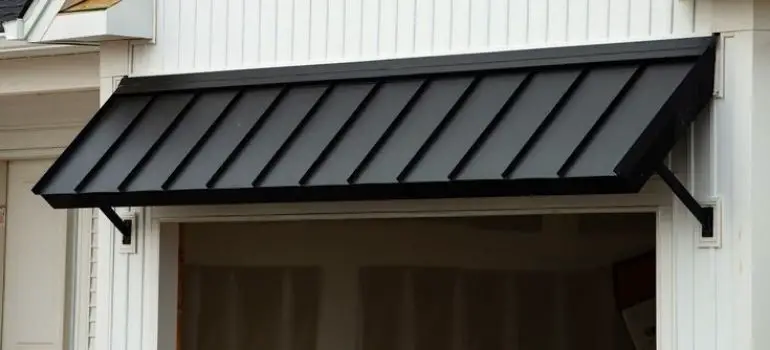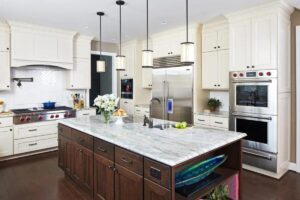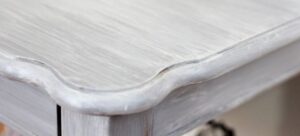Adding an awning to a metal building can greatly enhance both its functionality and aesthetics. Whether you’re looking to create shaded areas for outdoor activities or simply add an architectural feature to your building, installing an awning is a practical and visually appealing solution.
Understanding Awnings
Awnings come in various types, including retractable, stationary, and motorized options. They are typically made from materials such as canvas, metal, or acrylic fabric. Each type has its own set of advantages and can be customized to suit different preferences and needs.
Benefits of Adding an Awning to a Metal Building
Protection from the Elements
One of the primary benefits of adding an awning to a metal building is protection from the elements. Awnings provide shade from the sun, shielding the building’s exterior and interior from harmful UV rays. They also offer protection against rain, snow, and other weather conditions, helping to extend the lifespan of the building’s materials.
Enhanced Aesthetics
In addition to providing practical benefits, awnings can significantly enhance the aesthetics of a metal building. With a wide range of colors, patterns, and designs available, awnings can complement the building’s architecture and improve its overall appearance.
Increased Energy Efficiency
Another significant advantage of adding an awning to a metal building is the potential for increased energy efficiency. By providing shade and reducing direct sunlight exposure, awnings can help regulate the temperature inside the building, leading to reduced energy consumption and lower utility costs.
During hot weather, awnings can block a significant amount of sunlight from entering the building through windows and doors, helping to keep indoor spaces cooler and reducing the need for air conditioning. This can result in lower energy bills and a more comfortable environment for occupants.
Similarly, in colder climates, awnings can help prevent heat loss by providing an additional layer of insulation over windows and doors. By trapping heat inside the building and reducing drafts, awnings can help improve heating efficiency and lower heating costs during the winter months.
Additionally, by reducing the demand for heating and cooling, awnings can help lessen the environmental impact of a metal building and contribute to sustainability efforts. This can be particularly beneficial for businesses looking to reduce their carbon footprint and operate more eco-friendly facilities.
Overall, by improving energy efficiency and reducing reliance on heating and cooling systems, adding an awning to a metal building can result in long-term cost savings and environmental benefits. It’s a simple yet effective way to make your building more energy-efficient and environmentally friendly.
Preparing for Installation

Before you begin installing an awning on your metal building, it’s crucial to take the necessary steps to prepare for the installation process. Proper preparation ensures a smooth and successful installation and helps to avoid potential issues or delays.
- Assessing the Building’s Structure: Start by thoroughly examining the structure of your metal building to determine the best location for installing the awning. Consider factors such as the building’s orientation, existing features like doors and windows, and any potential obstructions or obstacles.
- Choosing the Right Type of Awning: Next, select the type of awning that best suits your needs and preferences. Consider factors such as the size of the area you want to shade, the style of your building, and your budget. Whether you opt for a retractable awning, a stationary awning, or a motorized awning, ensure it’s compatible with your metal building and meets your requirements.
- Gathering Necessary Tools and Materials: Before you begin the installation process, make sure you have all the tools and materials you’ll need on hand. This may include measuring tape, a level, a drill, screws or bolts, mounting brackets, and the awning itself. Having everything ready beforehand will help streamline the installation process and prevent interruptions.
- Clearing the Installation Area: Clear the area where you plan to install the awning, removing any debris, vegetation, or other obstacles that could interfere with the installation process. Ensure the area is clean and free of any hazards to provide a safe and accessible workspace for installation.
Steps to Add an Awning to a Metal Building
- Clearing the Area: Begin by clearing the area where you intend to install the awning. Remove any debris, vegetation, or obstacles that may obstruct the installation process. Ensure the area is clean and level to provide a stable foundation for the awning.
- Installing Support Brackets: Once the area is cleared, proceed to install support brackets onto the metal building. Use a measuring tape, level, and appropriate tools to ensure the brackets are installed evenly and securely. Position the brackets according to the dimensions of the awning and the desired location for installation.
- Mounting the Awning: With the support brackets in place, carefully mount the awning onto the brackets. Depending on the type of awning you’ve chosen, this may involve attaching the awning frame to the brackets using screws or bolts. Follow the manufacturer’s instructions carefully to ensure proper alignment and secure attachment.
- Securing the Awning in Place: Once the awning is mounted onto the support brackets, secure it in place by tightening any bolts or screws as necessary. Double-check the alignment and stability of the awning to ensure it is securely attached to the metal building. Make any adjustments as needed to achieve the desired positioning and tension.
- Testing for Functionality: After the awning is securely installed, test its functionality to ensure it operates smoothly and effectively. If you’ve chosen a retractable or motorized awning, test the opening and closing mechanisms to ensure they function properly. Make any necessary adjustments to ensure the awning operates smoothly and efficiently.
Maintenance Tips
To ensure your awning remains in good condition and continues to provide reliable performance, it’s important to follow these maintenance tips:
- Regular Cleaning: Clean the awning regularly to remove dirt, debris, and other contaminants that can accumulate over time.
- Inspections for Damage: Inspect the awning periodically for signs of damage, such as tears, holes, or loose hardware. Address any issues promptly to prevent further damage.
Conclusion
Adding an awning to a metal building offers numerous benefits, including protection from the elements, enhanced aesthetics, and increased energy efficiency. By following the steps outlined above and maintaining your awning properly, you can enjoy these benefits for years to come.
FAQ
Yes, awnings can typically be installed on various types of metal buildings, including warehouses, barns, and commercial structures.
The time it takes to install an awning can vary depending on factors such as the size and complexity of the project. However, most installations can be completed within a day or two.
With proper care and maintenance, awnings are relatively easy to maintain. Regular cleaning and inspections can help prolong the lifespan of your awning and ensure optimal performance.
Yes, awnings can be customized with a wide range of colors, patterns, and designs to complement your building’s architecture and enhance its aesthetic appeal.
Yes, awnings are designed to withstand various weather conditions, including rain, wind, and sun exposure. However, it’s important to choose a high-quality awning and perform regular maintenance to ensure durability and longevity.



